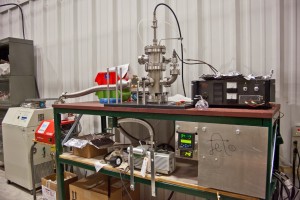Have you ever seen the fine polish on the exhaust pipe of a motorcycle? The metal shaping process isn’t how bikes get their sheen, and polish can only get someone so far. These parts have all been through a sputter coater designed to give an even finish, most likely thin film deposition. This even coating gives the smooth, shiny appearance hobbyists love with minimal material waste. That has helped keep costs for parts down and kept markets alive.
Sputtering is useful in many kinds of advanced manufacturing, especially manufacturing metalized products. The aerospace and automobile industries could not produce what they are able to without some efficient method that reduces waste and produces the perfect finish.
Why Sputtering?
A substrate can be coated in thin films of metallic materials, as long as it is evenly rotated to avoid unnecessary buildup. That’s one of the advantages to sputtering, an even coat free from defects. That might not matter to someone riding a bicycle, who finds a small metallic imperfection, but it makes a huge difference in precision applications for healthcare practitioners or pilots.
Besides the coating system, thin film vacuum coating is used to provide the same finish. You can imagine the process a lot like spray painting the wall of your house. The substrate is given an even coating from materials ejected through an extremely small nozzle. The chemicals are converted to gas via superheating well before hand. To protect the substrate, a vacuum sealed chamber is used because engineers can control temperature with greater precision.
How Magnets Help Coat Substrates
Some vacuum deposition systems utilize magnets, allowing for the same kind of application using different means. In this case, the nozzle mechanism that sputters is replaced by magnets pulling ions with opposite charges. These machines use pulses of magnetism to attract metals, which pull ions onto the substrate. Because ions with an opposing charge are repelled during this process, chemicals are smashed into the substrate to give it the coating desired. This process is preferred because of the low levels of radiation emitted.
Pros and Cons
Not all sputtering systems are useful in every situation. Some leave inconsistencies in the material, and are useful for certain applications. Ion-beam assisted deposition, for example, is best used for circuit boards that require precise conductivity between components.
——————————————————————————————-
Denton Vacuum, LLC specializes in machinery used in advanced manufacturing, including plasma assisted chemical vapor deposition.
